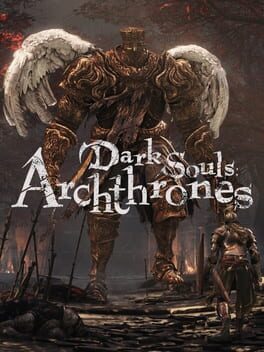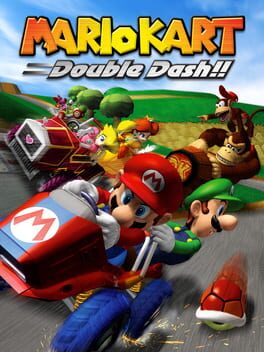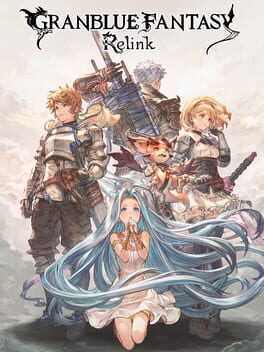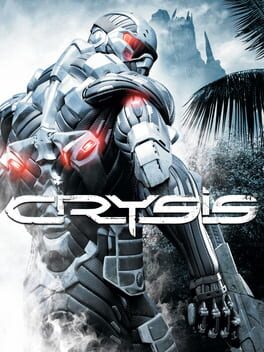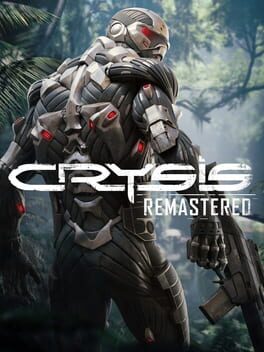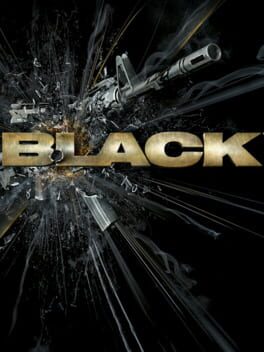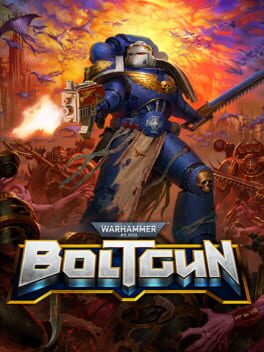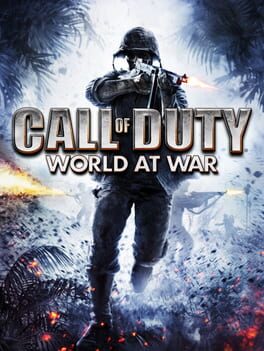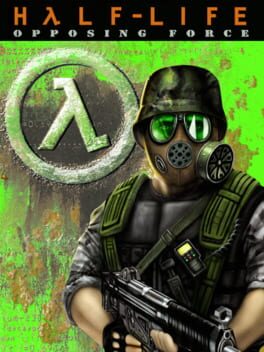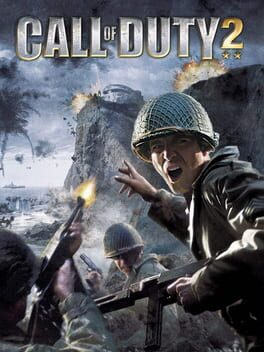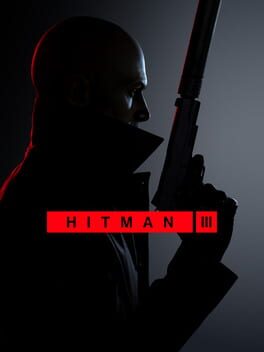HenX
BACKER
First off: My disappointment surely stems primarily from the fact that this game has been described as a Demon's Souls-like. Despite its name, Archthrones is not that.
Initially, I was optimistic. A great title screen, the armors in the character editor looked great. The game starts with a Demon's Souls reference - fantastic. However, I quickly had to realize that, apart from the superficial aspects, Archthrones doesn't have much to do with the game design of Demon's Souls. And this is definitely not „the new Dark Souls 4“. I know it's unfair to measure Archthrones against FromSoftware's masterpieces. Essentially, this is not much more than a few reworked levels from Dark Souls 3, a few new levels (which have significantly less quality than those from FS), and bosses whose movesets have been randomly mashed up from known bosses. The animations have been shamelessly taken from other games. To the point where a cease and desist wouldn't surprise me at all. (Although the recontextualization of some bosses is cool.)
Unfortunately, it's also evident that they didn't understand what makes Demon's Souls level design unique. Because this doesn't have anything to do with the shortcut-based design from Demon's Souls. The reworked Dark Souls 3 levels are at least visually well done. But gameplay-wise, not much changes aside from different enemy placement.
Tldr; Archthrones is nothing more than a level overhaul for Dark Souls 3 with randomly thrown together boss encounters from other FromSoft games. Unfortunately, very little here is based on original ideas, and there's an obvious lack of understanding of FromSoftware's game design. Those who don't expect too much might still have fun with this. However, this mod is being promoted on the official website as a new game heavily based on Demon's Souls' level design. And in this regard, Archthrones fails miserably.
Initially, I was optimistic. A great title screen, the armors in the character editor looked great. The game starts with a Demon's Souls reference - fantastic. However, I quickly had to realize that, apart from the superficial aspects, Archthrones doesn't have much to do with the game design of Demon's Souls. And this is definitely not „the new Dark Souls 4“. I know it's unfair to measure Archthrones against FromSoftware's masterpieces. Essentially, this is not much more than a few reworked levels from Dark Souls 3, a few new levels (which have significantly less quality than those from FS), and bosses whose movesets have been randomly mashed up from known bosses. The animations have been shamelessly taken from other games. To the point where a cease and desist wouldn't surprise me at all. (Although the recontextualization of some bosses is cool.)
Unfortunately, it's also evident that they didn't understand what makes Demon's Souls level design unique. Because this doesn't have anything to do with the shortcut-based design from Demon's Souls. The reworked Dark Souls 3 levels are at least visually well done. But gameplay-wise, not much changes aside from different enemy placement.
Tldr; Archthrones is nothing more than a level overhaul for Dark Souls 3 with randomly thrown together boss encounters from other FromSoft games. Unfortunately, very little here is based on original ideas, and there's an obvious lack of understanding of FromSoftware's game design. Those who don't expect too much might still have fun with this. However, this mod is being promoted on the official website as a new game heavily based on Demon's Souls' level design. And in this regard, Archthrones fails miserably.
2019
2020
2007
Something I often read about Crysis is that this game is merely graphic eye-candy, which impressed in 2007 but lacks gameplay depth. However, this does a disservice to the game because Crysis is much more than a simple first-person shooter. And Crysis knows (most of the time) exactly what it is.
Unlike in Call of Duty, you don't follow linear paths here. Unlike in "modern" Far Cry games, Crysis doesn't use its open world to guide you from quest marker to quest marker. Instead, Crysis offers players open areas where the goal is fixed, but how you achieve it is entirely up to you. You can sneak through the jungle, swim or dive in the sea, or you can engage in open combat. The game allows you to decide how you want to play, and there's no "one right way". With this approach, Crysis created a gameplay structure that wouldn't be revisited with the same level of quality until a decade later in The Legend of Zelda: Breath of the Wild.
This gameplay style isn't just enabled by the game world. The Nanosuit is brilliantly implemented and gives players the choice to rely on stealth functions or switch to armor mode to engage in open combat. In terms of gameplay, you can see some parallels to Crytek's earlier work, Far Cry. Crysis builds upon the gameplay strengths of its predecessor and expands them in the way already mentioned. Both games were groundbreaking in terms of technology and share some visual similarities.
However, Crysis has something that Far Cry lacked: Art direction. It shows that Crysis knows exactly what it is. In 2007, it wasn't just graphically impressive; it also consolidated all the visual elements into a highly focused visual style that organically blends all the then-new graphical effects.
For these reasons, Crysis is more than just graphic eye-candy. The game set benchmarks in technology, art direction, and player freedom in 2007 that remain largely unmatched today.
However, this game is not perfect. Thus, I have to address the part of the game that is most frequently criticized: the final third of the game. I mentioned earlier that Crysis MOSTLY knows what it is. Unfortunately, the missions in the last third of the game do not build upon the established gameplay strengths. The very linear sections in the final third strip away the freedoms that made the game great in the first place. While Crysis's gunplay isn't bad by any means, it's not the game's standout feature that sets it apart from other games in the genre. As a result, the last third of the game is, visually stunning as it is, gameplay-wise, nothing special.
But all of this criticism doesn't change the fact that Crysis was a genre-defining game, providing players with a remarkable degree of freedom within its missions even by today's standards. Only the final third of the game keeps this masterful game from being an absolute masterpiece.
Unlike in Call of Duty, you don't follow linear paths here. Unlike in "modern" Far Cry games, Crysis doesn't use its open world to guide you from quest marker to quest marker. Instead, Crysis offers players open areas where the goal is fixed, but how you achieve it is entirely up to you. You can sneak through the jungle, swim or dive in the sea, or you can engage in open combat. The game allows you to decide how you want to play, and there's no "one right way". With this approach, Crysis created a gameplay structure that wouldn't be revisited with the same level of quality until a decade later in The Legend of Zelda: Breath of the Wild.
This gameplay style isn't just enabled by the game world. The Nanosuit is brilliantly implemented and gives players the choice to rely on stealth functions or switch to armor mode to engage in open combat. In terms of gameplay, you can see some parallels to Crytek's earlier work, Far Cry. Crysis builds upon the gameplay strengths of its predecessor and expands them in the way already mentioned. Both games were groundbreaking in terms of technology and share some visual similarities.
However, Crysis has something that Far Cry lacked: Art direction. It shows that Crysis knows exactly what it is. In 2007, it wasn't just graphically impressive; it also consolidated all the visual elements into a highly focused visual style that organically blends all the then-new graphical effects.
For these reasons, Crysis is more than just graphic eye-candy. The game set benchmarks in technology, art direction, and player freedom in 2007 that remain largely unmatched today.
However, this game is not perfect. Thus, I have to address the part of the game that is most frequently criticized: the final third of the game. I mentioned earlier that Crysis MOSTLY knows what it is. Unfortunately, the missions in the last third of the game do not build upon the established gameplay strengths. The very linear sections in the final third strip away the freedoms that made the game great in the first place. While Crysis's gunplay isn't bad by any means, it's not the game's standout feature that sets it apart from other games in the genre. As a result, the last third of the game is, visually stunning as it is, gameplay-wise, nothing special.
But all of this criticism doesn't change the fact that Crysis was a genre-defining game, providing players with a remarkable degree of freedom within its missions even by today's standards. Only the final third of the game keeps this masterful game from being an absolute masterpiece.
2020
Something I often read about Crysis is that this game is merely graphic eye-candy, which impressed in 2007 but lacks gameplay depth. However, this does a disservice to the game because Crysis is much more than a simple first-person shooter. And Crysis knows (most of the time) exactly what it is.
Unlike in Call of Duty, you don't follow linear paths here. Unlike in "modern" Far Cry games, Crysis doesn't use its open world to guide you from quest marker to quest marker. Instead, Crysis offers players open areas where the goal is fixed, but how you achieve it is entirely up to you. You can sneak through the jungle, swim or dive in the sea, or you can engage in open combat. The game allows you to decide how you want to play, and there's no "one right way". With this approach, Crysis created a gameplay structure that wouldn't be revisited with the same level of quality until a decade later in The Legend of Zelda: Breath of the Wild.
This gameplay style isn't just enabled by the game world. The Nanosuit is brilliantly implemented and gives players the choice to rely on stealth functions or switch to armor mode to engage in open combat. In terms of gameplay, you can see some parallels to Crytek's earlier work, Far Cry. Crysis builds upon the gameplay strengths of its predecessor and expands them in the way already mentioned. Both games were groundbreaking in terms of technology and share some visual similarities.
However, Crysis has something that Far Cry lacked: Art direction. It shows that Crysis knows exactly what it is. In 2007, it wasn't just graphically impressive; it also consolidated all the visual elements into a highly focused visual style that organically blends all the then-new graphical effects.
For these reasons, Crysis is more than just graphic eye-candy. The game set benchmarks in technology, art direction, and player freedom in 2007 that remain largely unmatched today.
However, this game is not perfect. Thus, I have to address the part of the game that is most frequently criticized: the final third of the game. I mentioned earlier that Crysis MOSTLY knows what it is. Unfortunately, the missions in the last third of the game do not build upon the established gameplay strengths. The very linear sections in the final third strip away the freedoms that made the game great in the first place. While Crysis's gunplay isn't bad by any means, it's not the game's standout feature that sets it apart from other games in the genre. As a result, the last third of the game is, visually stunning as it is, gameplay-wise, nothing special.
But all of this criticism doesn't change the fact that Crysis was a genre-defining game, providing players with a remarkable degree of freedom within its missions even by today's standards. Only the final third of the game keeps this masterful game from being an absolute masterpiece.
Unlike in Call of Duty, you don't follow linear paths here. Unlike in "modern" Far Cry games, Crysis doesn't use its open world to guide you from quest marker to quest marker. Instead, Crysis offers players open areas where the goal is fixed, but how you achieve it is entirely up to you. You can sneak through the jungle, swim or dive in the sea, or you can engage in open combat. The game allows you to decide how you want to play, and there's no "one right way". With this approach, Crysis created a gameplay structure that wouldn't be revisited with the same level of quality until a decade later in The Legend of Zelda: Breath of the Wild.
This gameplay style isn't just enabled by the game world. The Nanosuit is brilliantly implemented and gives players the choice to rely on stealth functions or switch to armor mode to engage in open combat. In terms of gameplay, you can see some parallels to Crytek's earlier work, Far Cry. Crysis builds upon the gameplay strengths of its predecessor and expands them in the way already mentioned. Both games were groundbreaking in terms of technology and share some visual similarities.
However, Crysis has something that Far Cry lacked: Art direction. It shows that Crysis knows exactly what it is. In 2007, it wasn't just graphically impressive; it also consolidated all the visual elements into a highly focused visual style that organically blends all the then-new graphical effects.
For these reasons, Crysis is more than just graphic eye-candy. The game set benchmarks in technology, art direction, and player freedom in 2007 that remain largely unmatched today.
However, this game is not perfect. Thus, I have to address the part of the game that is most frequently criticized: the final third of the game. I mentioned earlier that Crysis MOSTLY knows what it is. Unfortunately, the missions in the last third of the game do not build upon the established gameplay strengths. The very linear sections in the final third strip away the freedoms that made the game great in the first place. While Crysis's gunplay isn't bad by any means, it's not the game's standout feature that sets it apart from other games in the genre. As a result, the last third of the game is, visually stunning as it is, gameplay-wise, nothing special.
But all of this criticism doesn't change the fact that Crysis was a genre-defining game, providing players with a remarkable degree of freedom within its missions even by today's standards. Only the final third of the game keeps this masterful game from being an absolute masterpiece.
2023
Wow. I really didn't have high expectations for this game. I didn't like from the beginning that there are 1000 planets. Nevertheless, I could understand the artistic intention behind this decision. And the gameplay presentation looked quite promising. And I even liked Fallout 4.
And yes, Starfield is not Fallout, but Starfield lacks what is most important for a Bethesda game, and what Fallout 4 still did very well: Big quests for different factions that all felt relevant to the game world, and where I could decide from the beginning which faction to join. And that was my only expectation for Starfield. But no, instead of letting me explore this vast universe and join any faction, Starfield forces me to join the Constellation. A group full of boring do-gooders. And instead of giving me the opportunity to decline joining and find another faction, I am brought into the Crimson Fleet within the main quest anyway and then I get the opportunity to join them. Thanks for that, Bethesda, so much for the advertised freedom.
At this point, I could also complain about the super crappy skill system, which has been completely ass since Fallout 4. And Starfield even manages to make skills like Speech feel even less rewarding here because the game wants to steer me towards just one story path anyway. But hey, not every game can be Fallout New Vegas. And we've already established that Starfield doesn't give a shit about freedom.
It makes me fucking angry. What makes Bethesda games stand out the most is even further removed here. Instead, you get the most boring game I've played in years. Thanks for that, Bethesda.
And yes, Starfield is not Fallout, but Starfield lacks what is most important for a Bethesda game, and what Fallout 4 still did very well: Big quests for different factions that all felt relevant to the game world, and where I could decide from the beginning which faction to join. And that was my only expectation for Starfield. But no, instead of letting me explore this vast universe and join any faction, Starfield forces me to join the Constellation. A group full of boring do-gooders. And instead of giving me the opportunity to decline joining and find another faction, I am brought into the Crimson Fleet within the main quest anyway and then I get the opportunity to join them. Thanks for that, Bethesda, so much for the advertised freedom.
At this point, I could also complain about the super crappy skill system, which has been completely ass since Fallout 4. And Starfield even manages to make skills like Speech feel even less rewarding here because the game wants to steer me towards just one story path anyway. But hey, not every game can be Fallout New Vegas. And we've already established that Starfield doesn't give a shit about freedom.
It makes me fucking angry. What makes Bethesda games stand out the most is even further removed here. Instead, you get the most boring game I've played in years. Thanks for that, Bethesda.
2006
Great graphics, average gameplay
In terms of graphics, Black is truly impressive for a PS2 game. The effects are fantastic and parts of the levels can be destroyed. Black doesn't limit this destruction to just explosive barrels or shattered windows. You can also shoot new passages into walls or even blow up half of a building. Explosions often chain together, filling the screen with explosions, especially in minefields. Enemy bunkers can be destroyed with grenades or rocket launchers. These are all great details, but here lies the biggest issue with Black: All these features are unfortunately hardly relevant in terms of gameplay. While you can occasionally create new pathways through walls, the game doesn't create interesting scenarios with this mechanic. And even though it's cool to blow up half of a building with explosive tanks, gameplay-wise, it's not more relevant than a regular red barrel.
Yet, despite the fact that the core of the game is just an average shooter, it kept me entertained throughout the entire (and thankfully relatively short) campaign. Even though it might not have much gameplay significance, it's still satisfying to blast doors open with a shotgun. However, many things are unfortunately limited to being a great idea, but nothing more.
In terms of graphics, Black is truly impressive for a PS2 game. The effects are fantastic and parts of the levels can be destroyed. Black doesn't limit this destruction to just explosive barrels or shattered windows. You can also shoot new passages into walls or even blow up half of a building. Explosions often chain together, filling the screen with explosions, especially in minefields. Enemy bunkers can be destroyed with grenades or rocket launchers. These are all great details, but here lies the biggest issue with Black: All these features are unfortunately hardly relevant in terms of gameplay. While you can occasionally create new pathways through walls, the game doesn't create interesting scenarios with this mechanic. And even though it's cool to blow up half of a building with explosive tanks, gameplay-wise, it's not more relevant than a regular red barrel.
Yet, despite the fact that the core of the game is just an average shooter, it kept me entertained throughout the entire (and thankfully relatively short) campaign. Even though it might not have much gameplay significance, it's still satisfying to blast doors open with a shotgun. However, many things are unfortunately limited to being a great idea, but nothing more.
2016
I played the Android version back then and was completely thrilled. Now the game has finally been released on Steam, and it looks even better on the big screen. Visually, the game looks fantastic. The gameplay elements are simply designed, the backgrounds are beautiful and full of details. The levels are creatively designed, and the collectibles are cleverly hidden. I also really like the game's ambient space music. The game is not particularly long but it's fun and has a lot of potential. Therefore, I'm very excited for the sequel. My only criticism of this version is that the mobile UI is constantly visible while playing. Kinda annoying.
Boltgun is fantastic. Clearly one of the top games from the already strong gaming year 2023. Although I have zero knowledge of the Warhammer universe, what I do know is that the Space Marines are supposed to be the most badass motherfuckers, and the game conveys that fantastically. When the Marine comes around the corner, the enemies scream in fear and raise their arms because they know it's their inevitable end.
Every weapon you get here just feels overwhelmingly powerful. Ironically, it's the shotgun that has the least oomph, but that's not because it's bad, it's just that the other weapons are so much more powerful.
Regular enemies get completely torn apart by the starting weapon - the chainsword. In general, the chainsword is amazing. With it, you can pull yourself towards distant enemies or finishing off stronger enemies with a chainsaw-shotgun combo, which feels absolutely fantastic.
Even the otherwise annoying search for key cards has been cleverly solved here: instead of having to search the entire level for the key, there is another path near the locked door where you find the key. Often, there is also a direct path back to the door so you don't have to walk the entire way back again. It's certainly a change that not everyone will like, but personally, I really enjoyed it. It really improves the games flow.
There are some boss fights in between that aren't really anything special but are still fun. However, the final boss with its huge arena impressed me and was simply magnificent.
Overall, the game reminded me a lot of Doom Eternal with its arena battles, which is definitely a good thing. Anyone interested in the genre should check out this game. For me, along with RE4 and Hi-Fi Rush, it's one of the best games of the year.
Every weapon you get here just feels overwhelmingly powerful. Ironically, it's the shotgun that has the least oomph, but that's not because it's bad, it's just that the other weapons are so much more powerful.
Regular enemies get completely torn apart by the starting weapon - the chainsword. In general, the chainsword is amazing. With it, you can pull yourself towards distant enemies or finishing off stronger enemies with a chainsaw-shotgun combo, which feels absolutely fantastic.
Even the otherwise annoying search for key cards has been cleverly solved here: instead of having to search the entire level for the key, there is another path near the locked door where you find the key. Often, there is also a direct path back to the door so you don't have to walk the entire way back again. It's certainly a change that not everyone will like, but personally, I really enjoyed it. It really improves the games flow.
There are some boss fights in between that aren't really anything special but are still fun. However, the final boss with its huge arena impressed me and was simply magnificent.
Overall, the game reminded me a lot of Doom Eternal with its arena battles, which is definitely a good thing. Anyone interested in the genre should check out this game. For me, along with RE4 and Hi-Fi Rush, it's one of the best games of the year.
The game would be better without the missions in Japan. The russian part is magnificently executed and plays really well. The same cannot be said about the japanese missions. The visibility there is an absolute disaster. I almost felt sick while playing because everything blends together in terms of color. Enemies are difficult to spot, and the jungle areas all look the same, which quickly becomes monotonous.
This game is highly underrated. It utilizes all the mechanics that made Half-Life great but transforms it into a more action-focused experience. The new weapons are incredibly creative, and it's enjoyable to use them in combat. The final boss is well-executed, and the finale, much like its predecessor, is iconic.
2005
This game already contains everything that defines the CoD franchise. - Regenerating health, holding breath while using the sniper rifle, climbing over obstacles, a fucking useless smoke grenade.
Overall a decent experience. Only the last mission was kinda underwhelming, especially compared to the first game.
Overall a decent experience. Only the last mission was kinda underwhelming, especially compared to the first game.
2021
